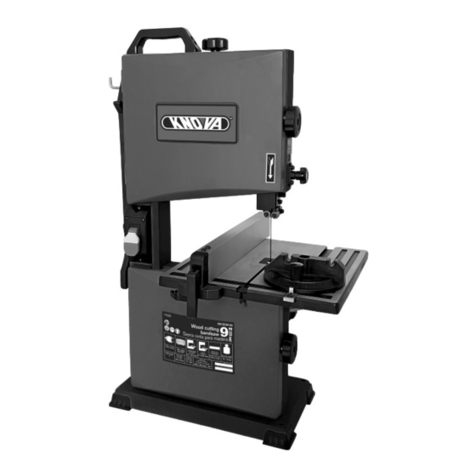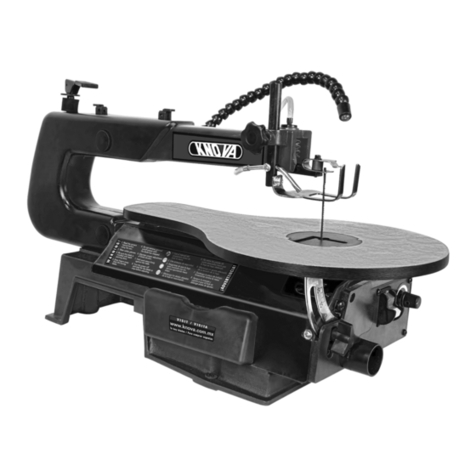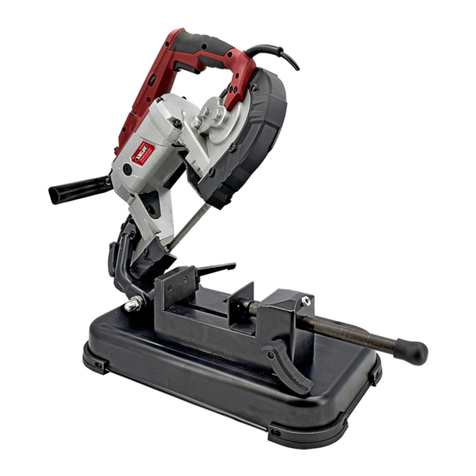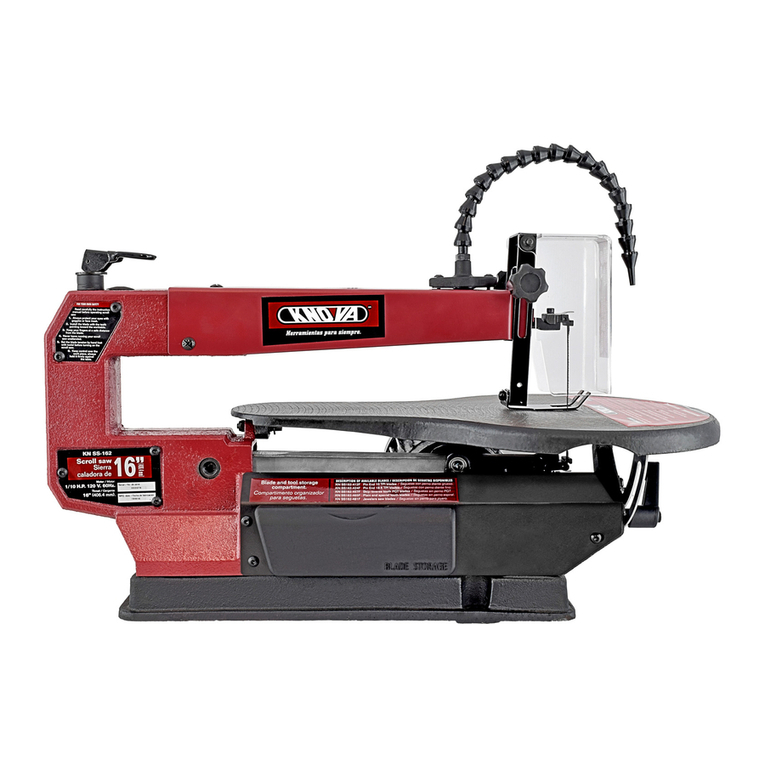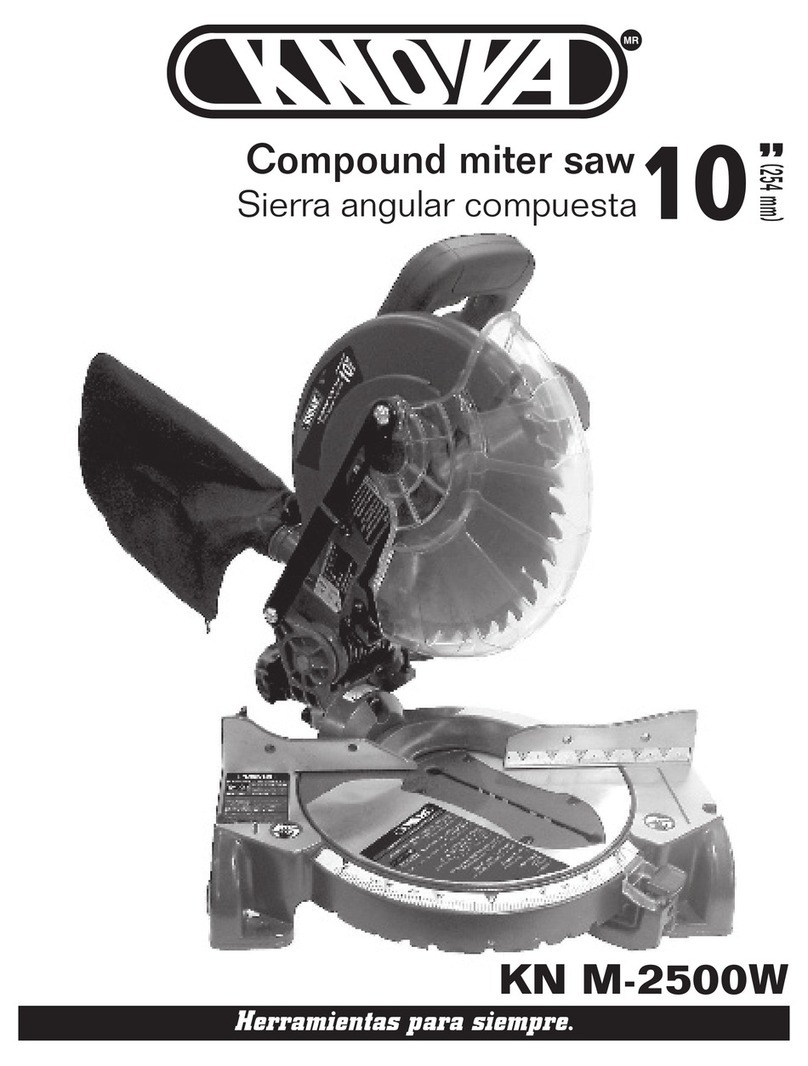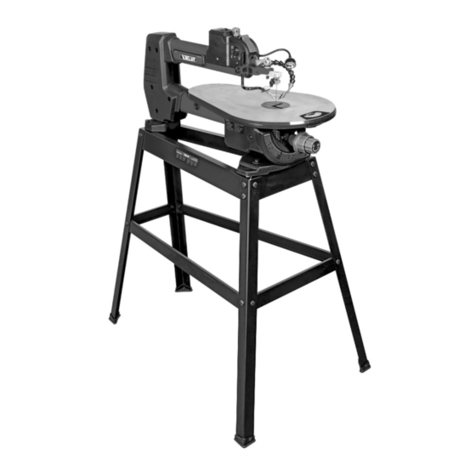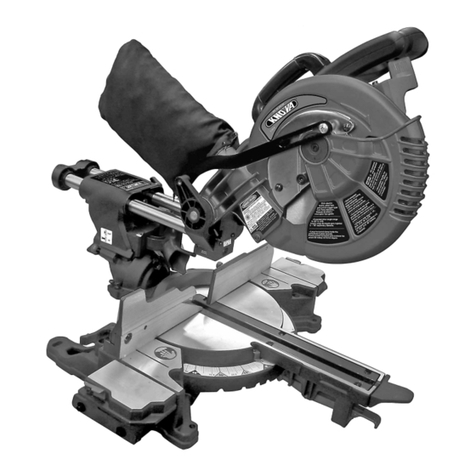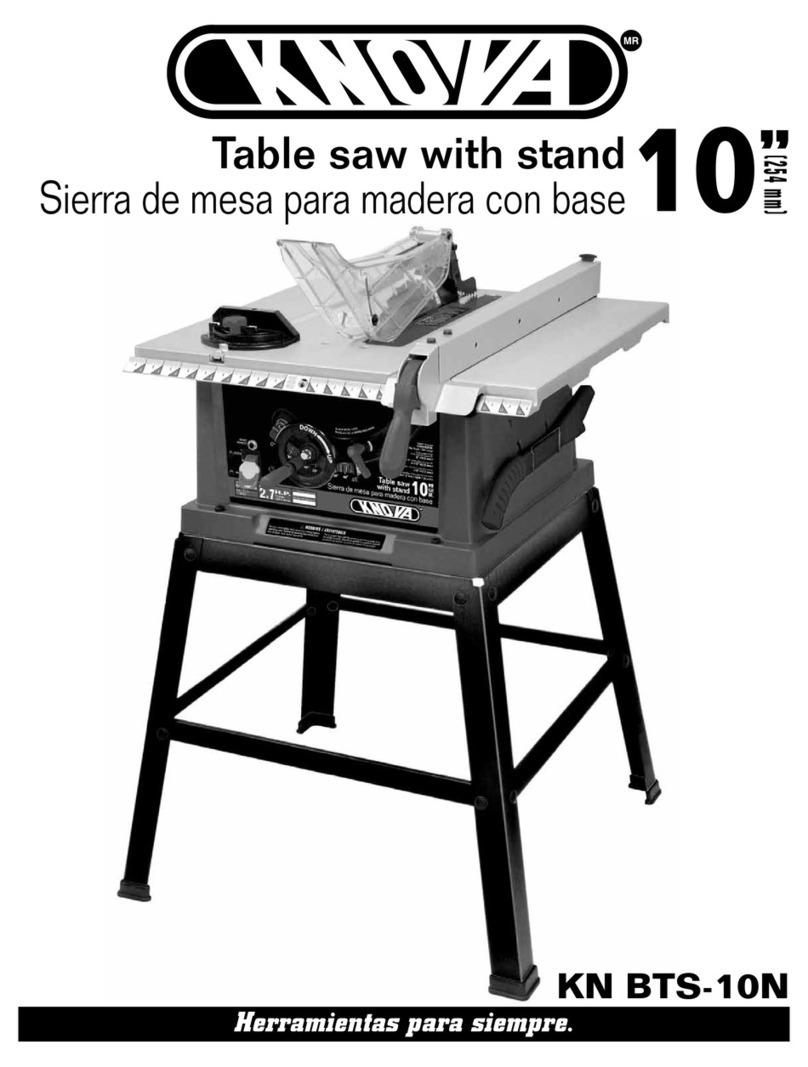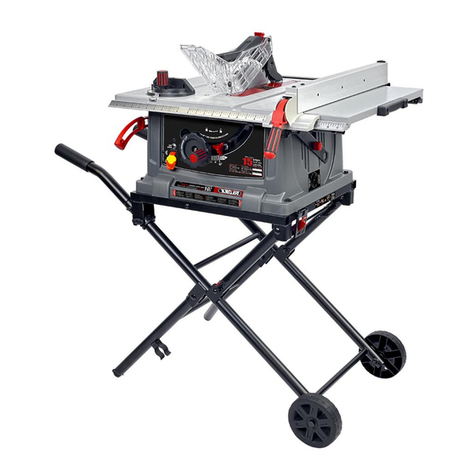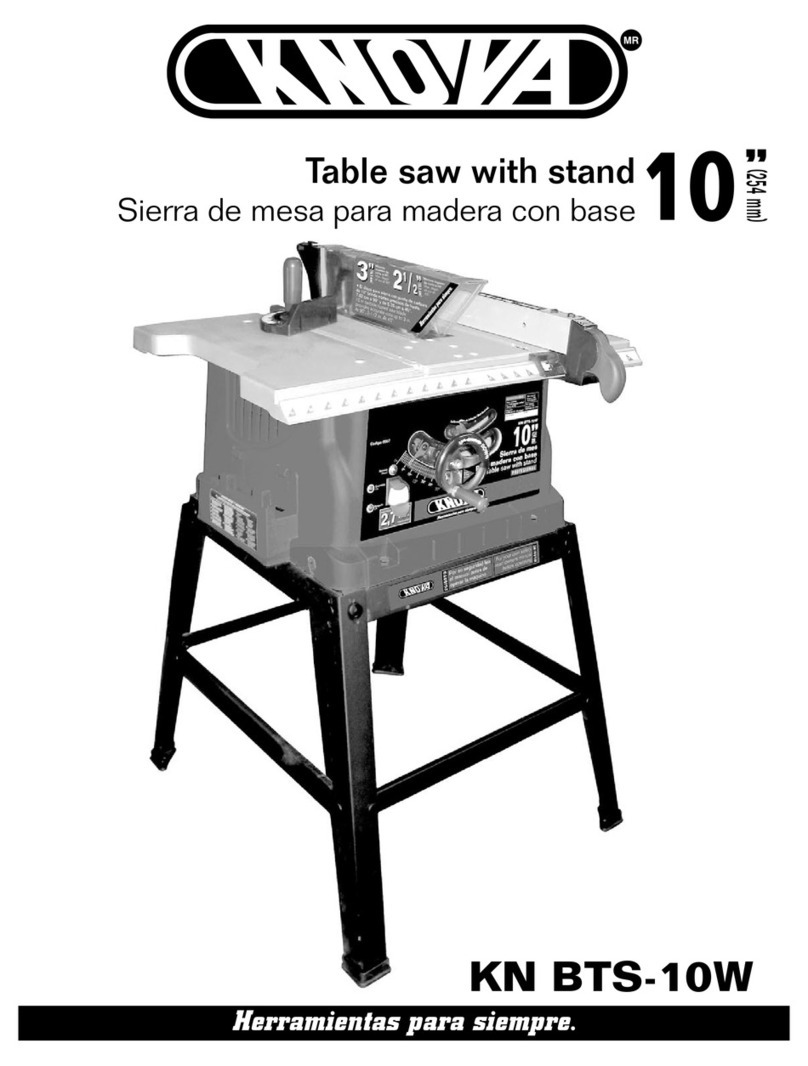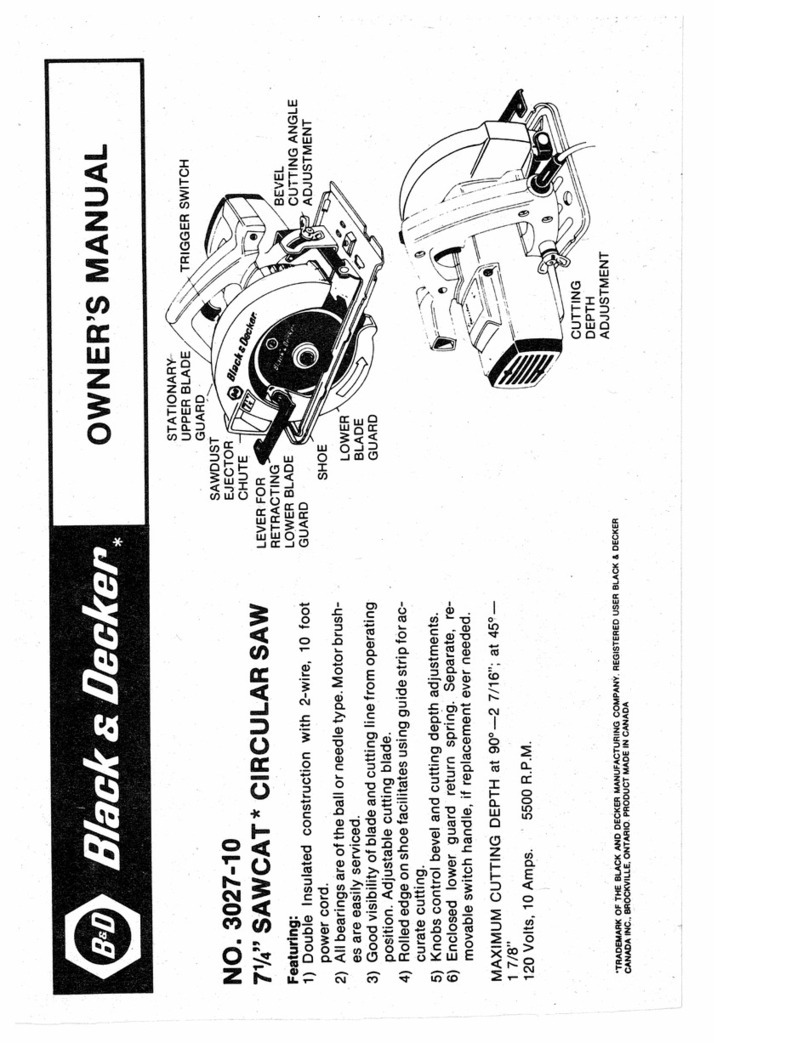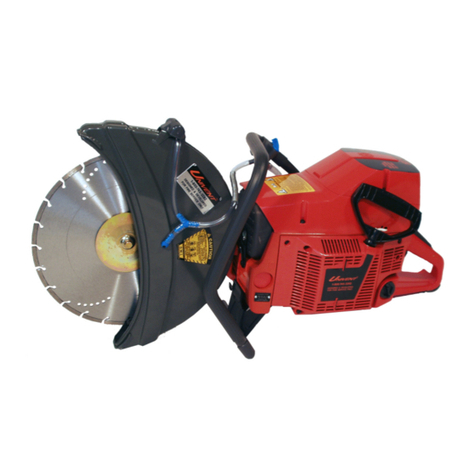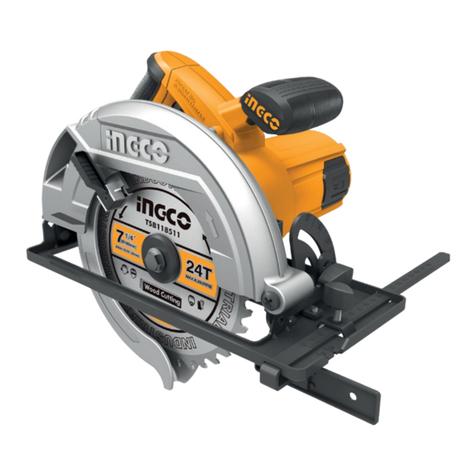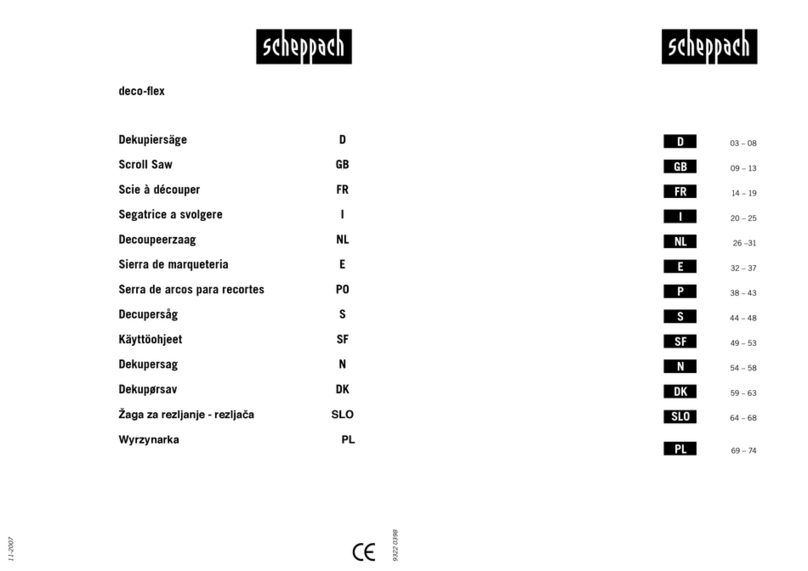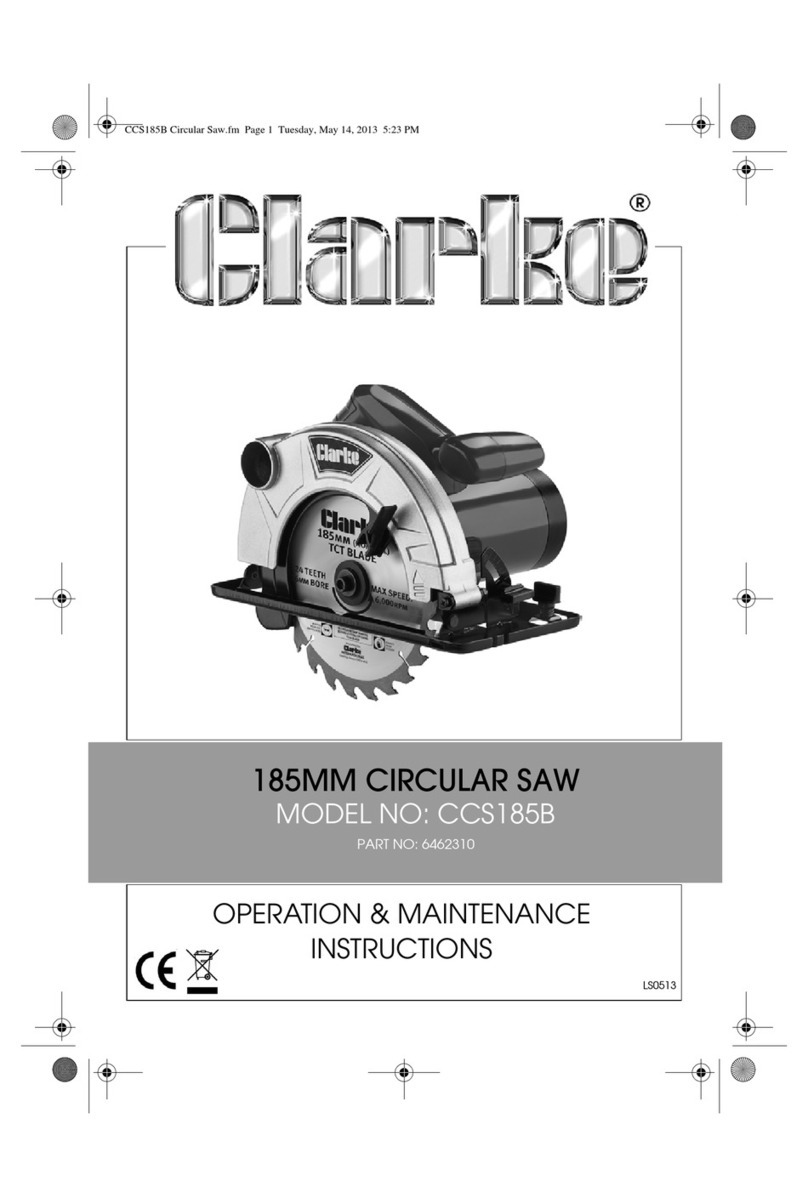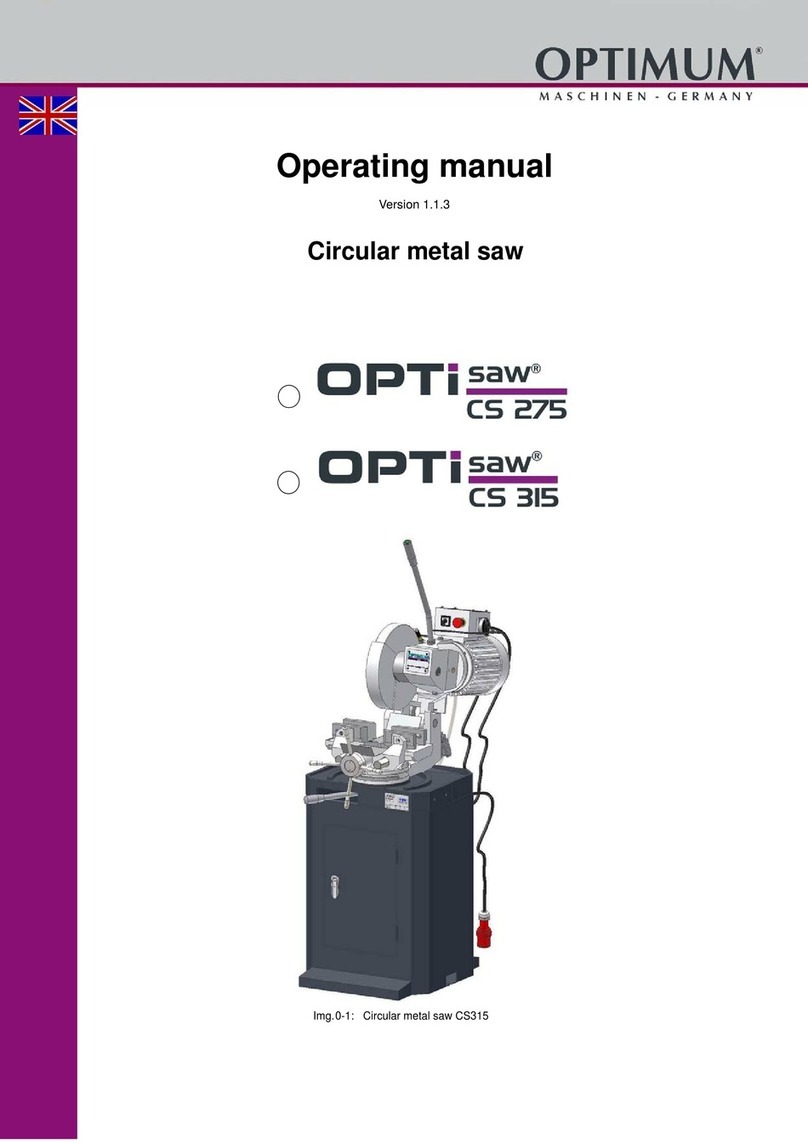
CAUTION
4
CHOP SAW SAFETY
8. AVOID ACCIDENTAL STARTING:
Make sure the switch is off before plugging the abrasive chop
saw into a power source.
1. KEEP CHILDREN AWAY:
• Make sure all bystanders are clear of the power tool
before and during use.
• Before using the power tool, test the saw by turning it
on and letting it run for a few seconds. If it makes an
unfamiliar noise or vibrates, stop immediately. Turn the
chop saw off and unplug. Do not restart the tool until
the problem has been corrected.
2. DO NOT FORCE THE TOOL:
• Only cut one piece per cutting operation.
3. BEFORE FREEING JAMMED MATERIAL:
• Release the trigger switch.
• Wait for all moving parts to stop.
• Unplug the chop saw.
4. BEFORE LEAVING THE CHOP SAW:
• Release the trigger switch.
• Unplug the chop saw.
• Make the workshop childproof. Lock the shop.
Disconnect master switches.
WHEN THE CHOP SAW IS RUNNING
DO NOT ALLOW FAMILIARITY GAINED
FROM FREQUENT USE OF YOUR CHOP SAW TO
CAUSE A CARELESS MISTAKE. REMEMBER THAT A
CARELESS FRACTION OF A SECOND IS ENOUGH TO
CAUSE A SEVERE INJURY.
CAUTION
• A 14 in. wheel is the maximum wheel capacity of
your chop saw. Never use a wheel that is too thick
to allow outer ange to engage with the ats on the
spindle. Larger wheels will come in contact with the
wheel guards, while thicker wheels will prevent the
bolt from securing the wheel on the spindle. Either
of these situations could result in a serious accident
causing personal injury.
• Do not attempt to cut wood or masonry with this chop
saw. Never cut magnesium or magnesium alloy with
this machine. Failure to comply could result in serious
personal injury.
• To prevent chop saw movement or tipping during
cutting procedure, secure the chop saw to a workbench
or work surface that is also secure.
• Always use the vise on the chop saw to prevent
accidents that could result in serious personal injury.
• Never stand or have any part of your body in line with
the path of the wheel. Doing so may cause an accident
resulting in serious personal injury.
CAUTION
Large, circular or irregularly shaped
workpieces may require additional clamping
in order to be properly secured for cutting.
Use “C” clamps that can be mounted along
the left and front side of the machine base. Also use blocks to
hold material securely. Failure to comply could result in
serious personal injury.
CAUTION
To avoid accidental start-up of your chop saw, always
make sure switch is off and “lock-on” feature is disengaged
before connecting to power source. Failure to heed this
warning could result in serious personal injury.
• USE ONLY CORRECT WHEELS. Do not use wheels
with incorrect size holes. Neveruse wheel washers or
wheel screws that are defective or incorrect. The
maximum wheel capacity of your chop saw is 14 inches.
• DO NOT REMOVE THE CHOP SAW’S WHEEL
GUARDS. Never operate the chop saw with any guard
or cover removed. Make sure all guards are operating
properly before each use.
• KEEP HANDS AWAY FROM CUTTING AREA. Keep
hands away from wheel. Do not reach underneath work
or around or under the wheel while the wheel is
rotating. Do not attempt to remove cut material while
wheel is moving.
• NEVER USE IN AN EXPLOSIVE ATMOSPHERE.
Normal sparking of the motor or sparking from cutting
metal could ignite fumes.
• DO NOT USE TOOL IF SWITCH DOES NOT TURN IT
ON AND OFF. Have defective switch replaced by an
authorized service center.
• KEEP TOOL DRY, CLEAN AND FREE FROM OIL AND
GREASE. Always use a clean cloth when cleaning.
Never use brake uids, gasoline, petroleum-based
products or any solvents to clean tool.
• ALWAYS SUPPORT LONG WORKPIECES. To
minimize risk of tipping the saw, always support long
workpieces.
• BEFORE MAKING A CUT, BE SURE ALL
ADJUSTMENTS ARE SECURE. ALWAYS USE THE
VISE CLAMP to secure the workpiece.
•
NEVER TOUCH WHEEL or other moving parts during use.
• NEVER START THE CHOP SAW WHEN THE WHEEL
IS IN CONTACT WITH THE WORKPIECE.
• NEVER cut more than one workpiece at a time.
• DO NOT STACK more than one workpiece on the
machine base at a time.
• NEVER PERFORM ANY OPERATION FREE-HAND.
Always secure the workpiece to be cut in the vise.
• NEVER hand hold a workpiece. Workpiece will become
very hot while being cut.
•
NEVER reach behind, under or within 3 in. of the wheel and
its cutting path with your hands and ngers for any reason.
•
NEVER reach to pick up a workpiece, a piece of scrap or
anything else that is in or near the cutting path of the wheel.
• MAKE SURE THE WHEEL IS SECURELY MOUNTED
as described in the operating instructions before
connecting the tool to a power supply. Do not tighten
wheel excessively, since this can cause cracks.
• CHECK THE WHEEL FOR FISSURES AND CRACKS,
and test for normal operation prior to use.
• ALWAYS EASE THE ABRASIVE WHEEL AGAINST
THE WORKPIECE when starting to cut. A harsh impact
can break the wheel.
• ONLY USE A CHOP SAW WHEEL RATED FOR 3600
RPM OR GREATER and manufactured in compliance
with ANSI B 7.1. Always store wheels in a dry place
with little temperature variation.
• BEFORE CUTTING, press the trigger switch and allow
the wheel to reach full speed.
